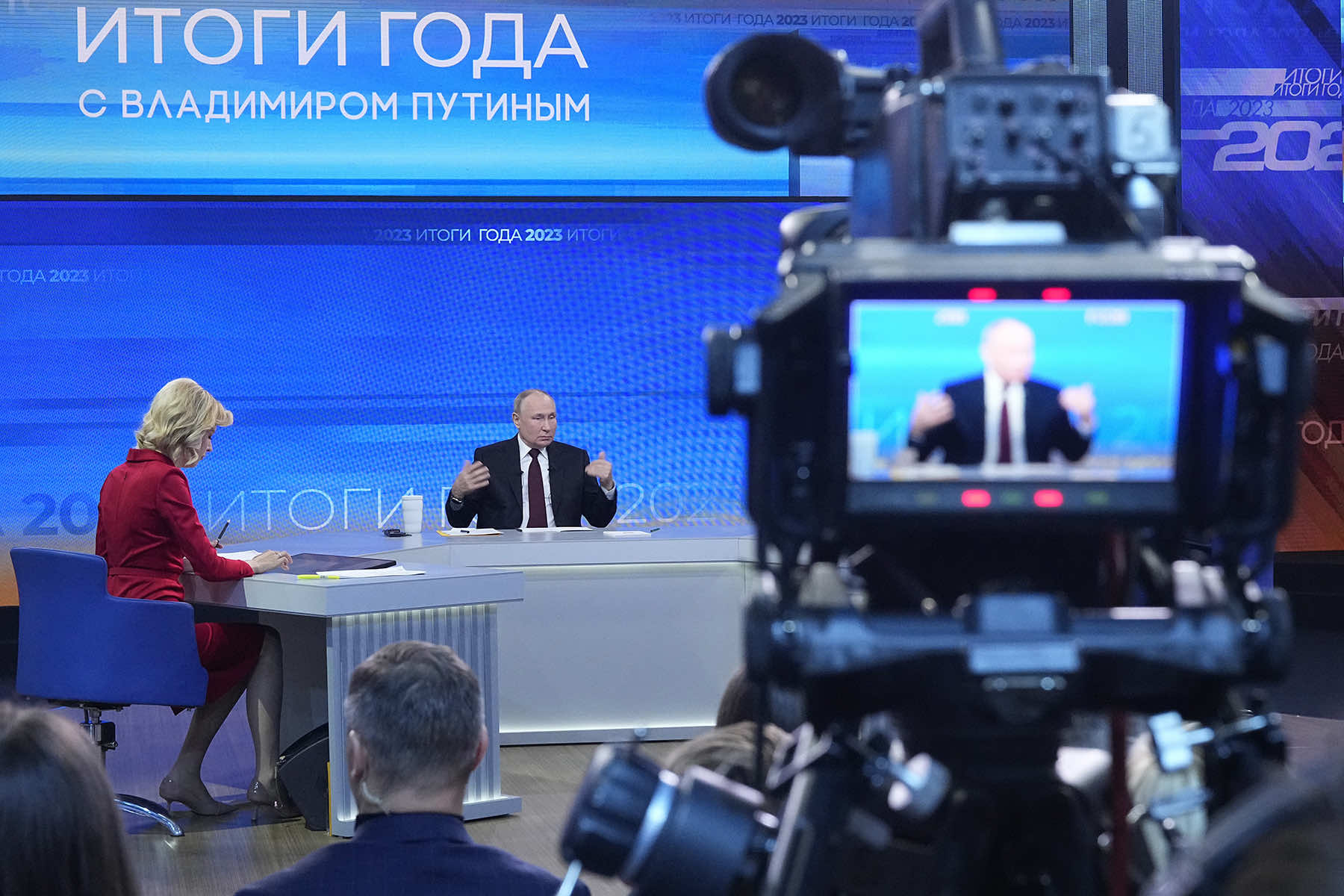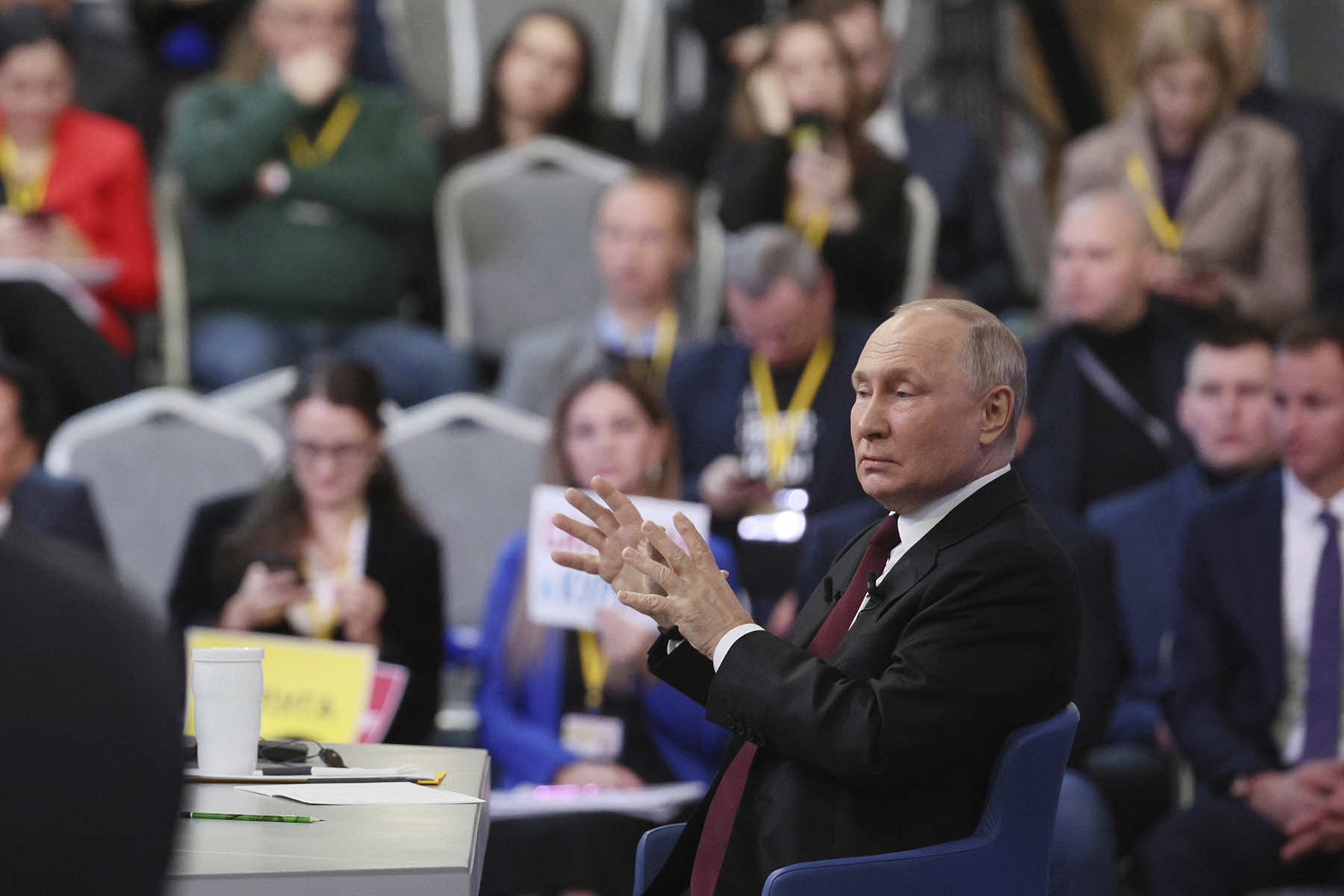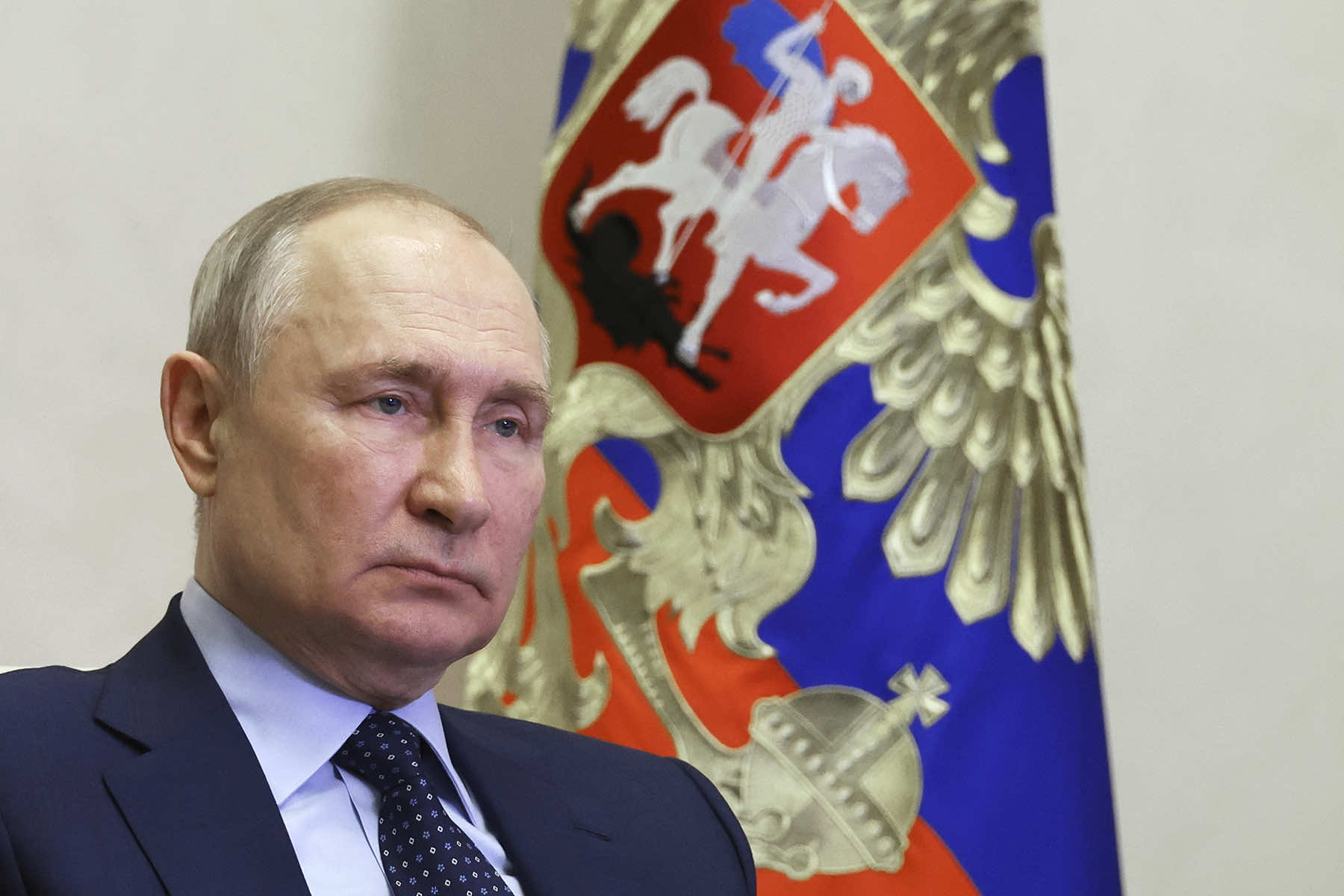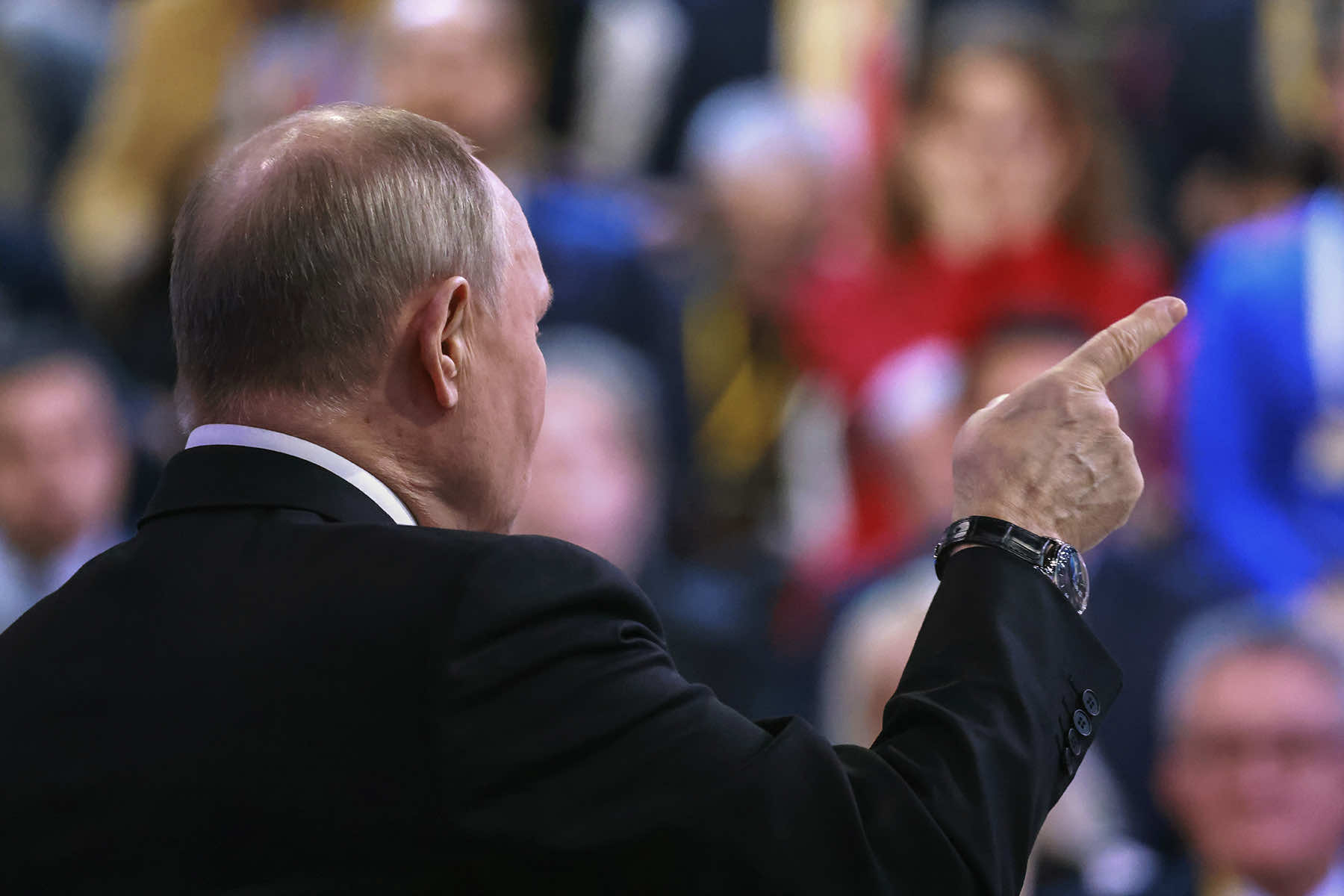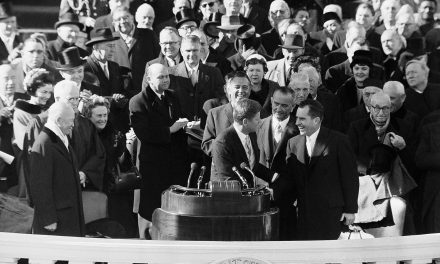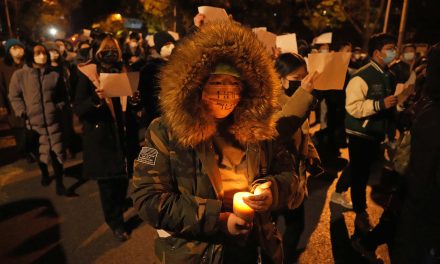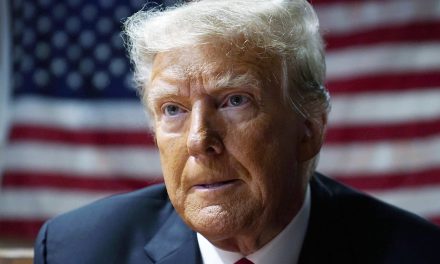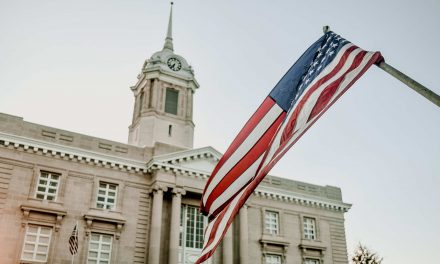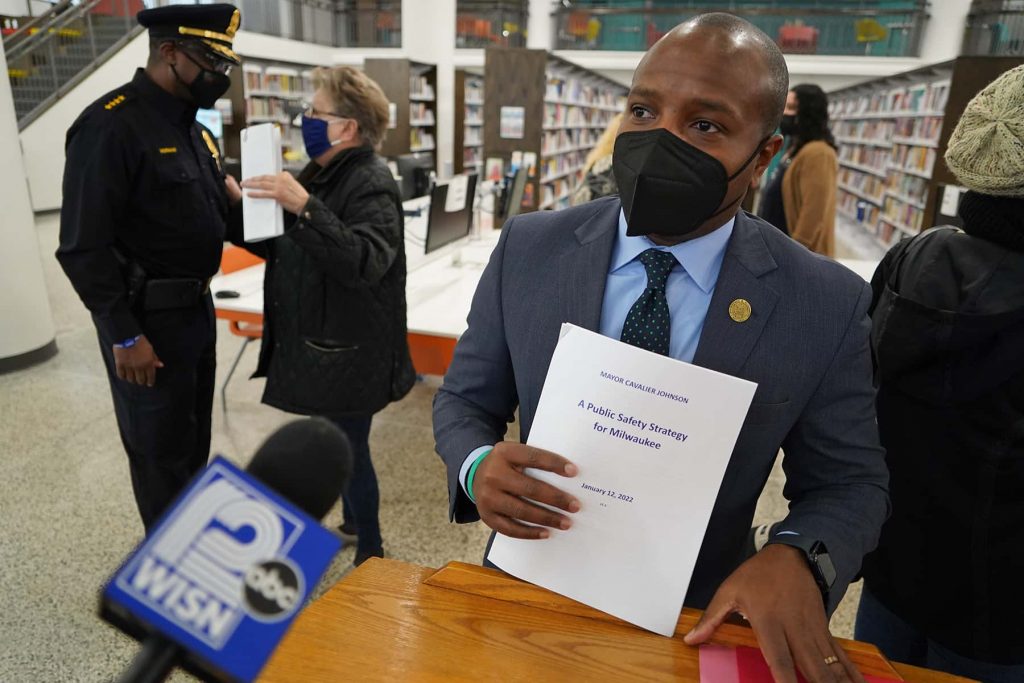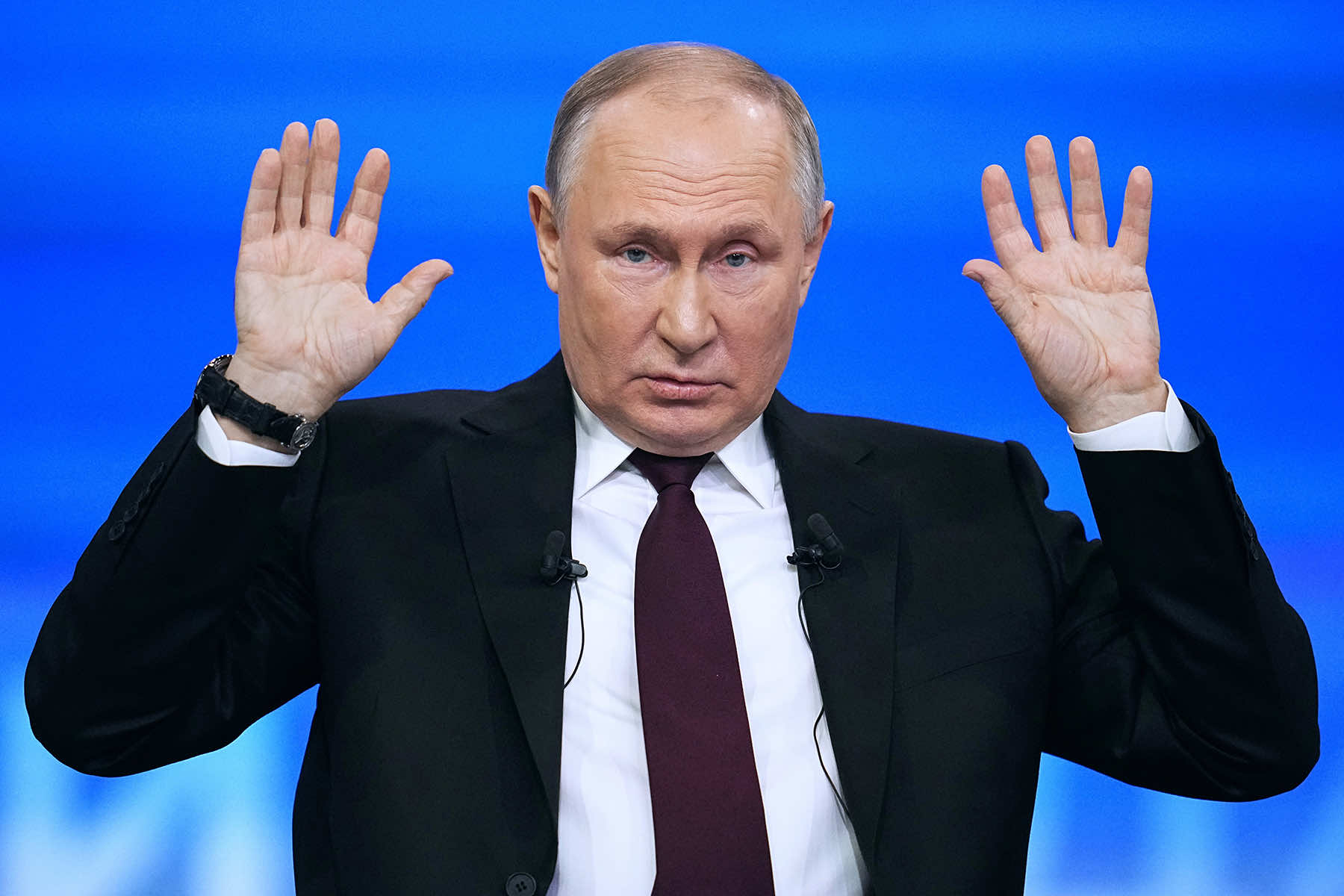
Emboldened by minimal battlefield gains and flagging Western support for Ukraine, a relaxed and confident Russian dictator Vladimir Putin said there would be no peace until Russia achieved its goals, which he said remain unchanged after nearly two years of fighting.
It was Putin’s first formal news conference that Western media were allowed to attend since the Kremlin sent troops into Ukraine in February 2022. The highly choreographed session, which lasted over four hours and included questions from ordinary Russians about things like the price of eggs and leaky gymnasium roofs, was more about spectacle than scrutiny.
But while using the show as an opportunity to reinforce his authority ahead of an election in March that he is all but certain to win, Putin also gave a few rare details on what Moscow calls its “special military operation” in Ukraine.
Putin, who sees himself as a modern Czar, has held power for nearly 24 years by terrorizing his opposition. When he announced a sham bid for reelection, he was greeted with applause in central Moscow. He did not hold his traditional news conference last year amid setbacks in Ukraine and fear of social unrest.
But with Ukrainian President Volodymyr Zelenskyy pleading for more U.S aid amid a stalling counteroffensive and fracturing Western support, he decided to deploy a new round of propaganda by facing reporters once more — even though only two Western journalists were called on for questions.
Putin highlighted Russia’s successes in Ukraine and the flagging support by Kyiv’s allies. The session dealt mostly with Ukraine and domestic issues, but a few international topics were addressed.
Putin said he wanted to reach a deal with Washington to free U.S. journalist Evan Gershkovich and U.S. businessman Paul Whelan, both held in Russia on politically motivated charges.
He deplored the death of thousands of civilians in Gaza amid the Israeli-Hamas war, citing U.N. Secretary-General Antonio Guterres, who called it a “graveyard for children.” He urged greater humanitarian aid, adding that Russia proposed setting up a field hospital in Gaza near the border with Egypt but Israel responded it would be unsafe.
Asked what he would have told himself from today’s perspective when he started his first term in 2000, Putin said he would have warned against “naivety and excessive trustfulness regarding our so-called partners” in the West.
The 71-year-old authoritarian appeared calm and relaxed during the questions, although he frequently cleared his throat, blaming the air conditioning.
Ordinary citizens submitted questions alongside those from journalists, and Russian media said at least 2 million were sent in advance, giving him a chance to appear personally involved in resolving their problems. That’s especially vital for Putin ahead of the March 17 election.
Although he has taken some questions from reporters at smaller events and foreign trips, Putin’s last big news conference was in 2021 as the U.S warned that Russia was about to move into Ukraine. He delayed an annual state-of-the-nation address until February 2023.
Since then, relations with the West have plunged to new lows amid the conflict in Ukraine.
U.S. State Department spokesman Matthew Miller responded to the Russian rhetoric by saying that Putin “still wishes to conquer Ukraine” but the belief that Russia would outlast the West or the United States was wrong.
Putin’s news conference also highlighted concerns some Russians have about another wave of mobilization.
He said there was no need for a second wave of mobilization of reservists to fight in Ukraine — a move that was deeply unpopular. Putin said there are some 617,000 Russian soldiers there, including around 244,000 troops who were mobilized a year ago to fight alongside professional forces. As of December 13, 486,000 soldiers have signed contracts with the military, he said.
His remarks about another mobilization were met with skepticism by some independent Russian media, which noted he had promised not to draft reservists for Ukraine and then reversed course and ordered a “partial” call-up. The move, which he announced in September 2022, prompted tens of thousands of Russians to flee the country.
He reiterated the same lies and disinformation he used to justify his brutal full-scale invasion of Ukraine, saying Moscow’s goals remained the “de-Nazification, de-militarization and a neutral status” of Ukraine.
The claim of “de-Nazification” refers to Russia’s false assertions that Ukraine’s government is heavily influenced by radical nationalist and neo-Nazi groups, an allegation derided by Kyiv and the West.
He reaffirmed his unfounded claim that much of today’s Ukraine, including the Black Sea port of Odesa and other coastal areas, historically belonged to Russia and were given away by Soviet founder Vladimir Lenin.
Some journalists who lined up for the news conference in freezing temperatures for hours to enter the hall wore traditional dress, including elaborate hats, to catch his eye. Many held identifying placards.
Although the event was tightly controlled, some online questions that Putin ignored appeared on screens in the hall.
“Mr. President, when will the real Russia be the same as the one on TV?” one text message said, apparently referring to the Kremlin’s control over the media that portrays Putin positively and glosses over the country’s problems.
Another read: “I’d like to know, when will our president pay attention to his own country? We’ve got no education, no health care. The abyss lies ahead.”
Putin was asked by an artificial intelligence version of himself, speaking with his face and voice, on whether he uses body doubles — a subject of intense speculation by some Kremlin watchers. Putin brushed off the suggestion.
“Only one person should look like myself and talk in my voice – that person is going to be me,” he said.

